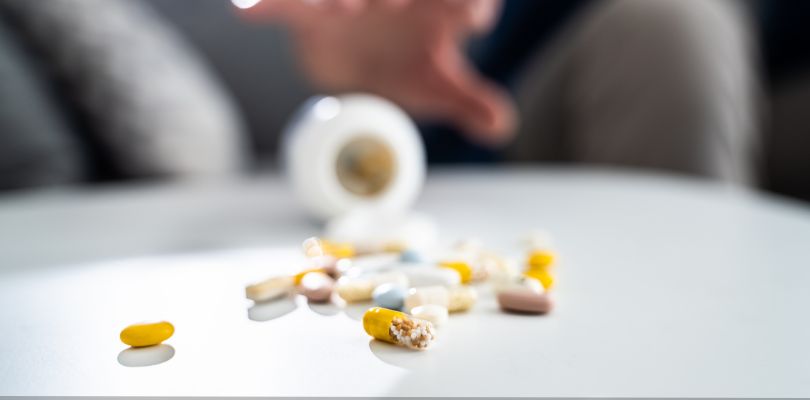Red Flags to Watch For
Opiate addiction is a serious and pervasive issue affecting millions of people worldwide. It involves the misuse of prescription pain medications such as oxycodone, hydrocodone and morphine, as well as illicit drugs like heroin. Luckily, various recovery treatment centers throughout Ontario can help with your addiction. This article outlines 11 key signs of opiate addiction, explores what opiate addiction is and discusses various treatment options.
What is Opiate Addiction?
Opiate addiction is a chronic disorder characterized by the compulsive use of opiate drugs despite harmful consequences. Opiates act on the brain's reward system, producing feelings of euphoria and pain relief. Over time, the brain becomes dependent on these drugs to function normally, leading to physical and psychological dependence.
Taking charge of your diet and avoiding certain foods can help you take control of your life. Here is a list of foods to avoid with psoriasis.
11 Warning Signs of Opiate Addiction
1. Increased Tolerance
Over time, individuals need higher doses of opiates to achieve the same effects, indicating the development of tolerance.
2. Physical Dependence
The body becomes reliant on opiates, leading to withdrawal symptoms when the drug is not taken. Symptoms may include sweating, shaking, nausea, and agitation.
3. Cravings
A strong, uncontrollable urge to use opiates is a common sign of addiction. These cravings can interfere with daily activities and responsibilities.
4. Loss of Control
Inability to regulate or limit opiate use despite attempts to quit or reduce consumption.
5. Neglecting Responsibilities
Ignoring personal, professional, or academic obligations due to opiate use. This can lead to problems at work, school, or home.
6. Continued Use Despite Problems
Persisting in opiate use even when it causes physical, mental, or social issues.
7. Changes in Appearance
Noticeable changes in physical appearance, such as weight loss, poor hygiene, and dilated or constricted pupils.
8. Behavioral Changes
Significant shifts in behavior, including increased secrecy, social withdrawal, and engaging in risky activities to obtain drugs.
9. Financial Problems
Spending large sums of money on opiates, leading to financial instability and potential legal issues.
10. Doctor Shopping
Visiting multiple doctors to obtain additional prescriptions or forging prescriptions to get more opiates.
11. Isolation
Withdrawing from family and friends to use opiates, often leading to strained relationships and loneliness.
Recovery Centers in Ontario
- CAMH (Centre for Addiction and Mental Health) - Toronto.
- Bellwood Health Services - Toronto.
- Renascent - Toronto.
- Edgewood Health Network - Toronto.
- Ontario Addiction Treatment Centres (OATC) - Various locations.
- The Recovery Village - Uxbridge.
- Canadian Centre for Addictions - Toronto.
- Homewood Health Centre - Guelph.
- Pine River Institute - Shelburne.
- Royal Ottawa Mental Health Centre - Ottawa.
Treatment Options for Opiate Addiction
Recognizing the signs of opiate addiction is the first step toward seeking help. There are several treatment options available, each tailored to meet the needs of the individual:
Medication-Assisted Treatment (MAT)
- Methadone: A long-acting opioid agonist that reduces cravings and withdrawal symptoms.
- Buprenorphine: A partial opioid agonist that helps manage withdrawal symptoms and reduces cravings.
- Naltrexone: An opioid antagonist that blocks the effects of opiates, preventing the feeling of euphoria.
Behavioral Therapy
- Cognitive-Behavioral Therapy (CBT): Helps individuals identify and change negative thought patterns and behaviors associated with drug use.
- Contingency management: Uses positive reinforcement, such as rewards, to encourage abstinence from opiates.
- Motivational interviewing: Enhances motivation to change drug-use behavior through goal-setting and support.
Counseling and Support Groups
- Individual counseling: One-on-one sessions with a therapist to address personal issues related to addiction.
- Group therapy: Provides a supportive environment where individuals can share experiences and strategies for recovery.
- 12-step programs: Programs like Narcotics Anonymous (NA) offer a structured approach to recovery with peer support.
Inpatient and Outpatient Programs
- Inpatient rehabilitation: Provides a structured, supportive environment with 24-hour medical care and therapy.
- Outpatient programs: Offers flexibility for individuals to attend treatment sessions while maintaining daily responsibilities.
Battling Opiate Addiction
Opiate addiction is a challenging and life-altering condition, but recovery is possible with the right support and treatment. Recognizing the signs of addiction is crucial for early intervention. If you or a loved one is struggling with opiate addiction, seek professional help to explore the most suitable treatment options. Remember, recovery is a journey, and taking the first step toward seeking help can lead to a healthier, drug-free life.
Learn about the effects of alcohol.







